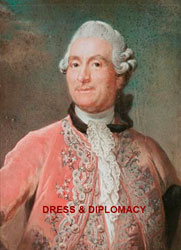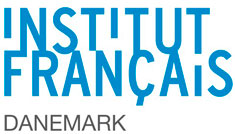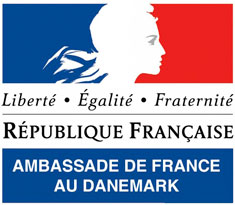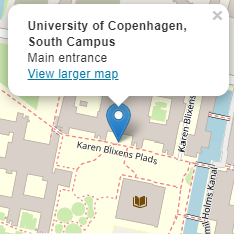Dress & Diplomacy
 Research & Development Day. Convened and introduced by Corinne Thépaut-Cabasset, Marie Sklodowska-Curie Fellow.
Research & Development Day. Convened and introduced by Corinne Thépaut-Cabasset, Marie Sklodowska-Curie Fellow.
The research theme chosen by Corinne Thépaut-Cabasset for CTR's Research & Development day will be presented through a series of case studies investigating the impact of diplomacy and secret service in the area of Dress and Textile.
There is still much to learn about where, how and why diplomats are keys actors in the many ways the trade of textile and the culture of clothing is spread out on a global scale through time and space.
Invited talks
- Kjerstin Vedel, PhD Fellow at Museum of National History at Frederiksborg
- Vivi Lena Andersen, archaeologist and curator at the Museum of Copenhagen
- Katia Johansen, conservator, Birgitte Thaulow, Fashion designer
The influence of diplomatic networks on fashion circuits has not yet attracted the attention of researchers in fashion history. Nonetheless, the diplomatic archives conserve numerous documents of diverse types concerning directly the study of fashion and more generally that of taste.
Attentive observers of the society of their time and of their contemporaries, diplomats, had an official and often political mission, thanks to marriages, births, dynastic events, celebrations of peace and treaties in which they participated in the place of their sovereign. They also served as intermediaries and indispensable relays in the movement of ideas, people and goods. Their role in the workings of the economy remains to be explored.
"Textiles and Diplomacy: Diplomats and Spies in the Early Modern Age", on 17th March 2016, was the first session of a series of conferences organized by Marie Sklodowska-Curie Fellow, Corinne Thépaut-Cabasset, (Horizon 2020) at the University of Copenhagen. “Dress and Diplomacy”, on 22sd March 2017, is the second part of the series.
Both experts and amateurs who share an interest in discovering how diplomats are a key factor in the trade and the dissemination of fashion across the globe are invited to share and discuss their thoughts during these sessions.
These sessions will take place at the Centre for Textile Research, and are open to the public free of charge.
For further information and registration, please email Corinne Thépaut-Cabasset.
Programme
13:30 Introduction by Corinne Thépaut-Cabasset, University of Copenhagen and
H.E. François Zimeray, French Ambassador in Denmark
13:50 The Dress and the Ambassador
Corinne Thépaut-Cabasset, SAXO Institute
14:10 The Role of Dress in a Danish Diplomat’s Career: The case study of J.H.E.
Bernstorff
Kjerstin Vedel, PhD Fellow, National Museum of History, Frederiksborg
14:30 Red heels: The symbol of a Power shift in 17th century Copenhagen
Vivi Lena Andersen, archaeologist and curator, Museum of Copenhagen
14:50 Dress to rule: Researching and publishing 10 Kings’ clothes
Katia Johansen, conservator
15:10 The Red Dress for Queen Margrethe of Denmark (TBC)
Birgitte Thaulow, Fashion designer
15:30 Discussion and closing remarks
Bio
Corinne Thépaut-Cabasset
Research Associate at the Château de Versailles. Post-doc researcher at the Victoria and Albert Museum in London for the HERA “Fashioning the Early Modern: Creativity and Innovation in Europe 1500-1800” (2010-13). Her project “DRESSING THE NEW WORLD. The Trade and the Culture of Clothing in the New Spanish Colonies 1600-1800” was awarded the EU Grant Marie Sklodowska-Curie Fellowship (Horizon 2020) at CTR/SAXO Institute, University of Copenhagen https://dressworld.hypotheses.org
Kjerstin Vedel
PhD Fellow at The Museum of National History at Frederiksborg and University of Southern Denmark. The project has the title ”Portraits as Fashion Pictures – Studies in Fashion among the Elite from 1600 to 1800”. A selection of portraits from the substantial collection of the museum is analysed in order to discover the role of fashion of the portrayed and of the social environment of the sitters. The project draws on methods from history and art history. She holds a master in French language and literature from Aarhus University and a master in Fashion Management from the French Fashion Institute (IFM). She has held positions as a teacher of fashion and design history at different educational institutions, and positions as a curator and administrator at cultural institutions.
Vivi Lena Andersen
Museum curator and archaeologist at the Museum of Copenhagen since 2001. Industrial PhD from the SAXO Institute, University of Copenhagen in affiliation to the Centre for Textile Research. The museum of Copenhagen’s collection of archaeological shoes dating from 1300-1800 forms the basis of an object biographical study of how everyday shoes were used and developed, seen from climate and function, craft and trade and fashion and self-promotion. The tile of her doctoral thesis is “Between Cobbles, Bunion, Shoelast and Fashion: Shoes from 1300-1800 from Archaeological Excavations in Copenhagen”
Katia Johansen
Born in USA, came to Denmark in 1968 during university studies. Began studies of textile conservation at the new School of Conservation at the Royal Academy of Fine Arts in 1973. Undergraduate degree 1977, masters 1999. Worked as conservator and curator at the Royal Danish Collections, Rosenborg Castle, from 1980-2016. Presently researching the kings' dress in the royal collections (ca. 1600-1860), to be published as Ten Kings' Clothes. Have lectured and published extensively on historical costume, including the website www.kongedragter.dk and the collaborative www.clothestellstories.com.
Map of South Campus
Sponsered by



